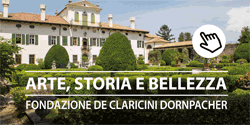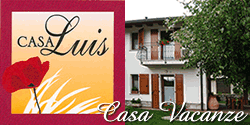Home / WHAT TO SEE /The Ursuline Nativity scenes
The Ursuline Nativity scenes
The artistic and historical crib of the Ursuline Sisters, placed since its origins in the Monastery of Santa Maria in Valle, consists of statues with head and hands in wax and body in tow. The oral tradition attributes the precious work of folk craftsmanship to the eighteenth century, but studies concerning the costumes place it in the second half of the nineteenth century. The statues, created in the silence of the enclosure, bring to life the people who animated the markets and the streets of Cividale also through the Friulian names with which the nuns had baptized them: Iustin, Agnul, Checo, Min, Zef, Nadal, Tin, Vigi, Toni, Bepo, Meni, Ursule, Sunte, Mariane, Mariute, Menie, Angiule, Filumene, Pine, Sante ... For decades the tradition of setting up the crib of the Ursulines, tradition that has been resumed, after a period of absence from Cividale del Presepe, just from December 2004 and in the original environment, that is below the bell tower of the Church of San Giovanni Battista, at the old Ursuline laundry .
The characters of the artistic and historical crib, Iustin, Agnul, Checo .... The Friulian names with which the nuns had baptized the statues with head and hands in wax and body in tow, realized in the silence of the enclosure, revive the people who animated the markets and the streets of Cividale in the nineteenth century.
Historical notes
Reconstructing the history of the nativity scene is difficult due to the lack of written documents and testimonies. The information here attested comes exclusively from the oral tradition. The crib was used by various scholars as a "documentary source for the history of clothing" in order to rebuild the popular costume. An analysis by Lea D'Orlandi and Gaetano Perusini attributes the realization of the work to the years 1860-1870, specifying that the characters were "dressed in convent by a nun of these countries". According to scholars, the clothing of the shepherds and the shepherds, documents the popular costume of the Cividale. "... Who had dressed them, in the silence of the enclosure, must remember the people who animated the markets and the streets of Cividale, also coming from neighboring countries and must have reproduced it with sufficient fidelity, if we look at the diligent packaging of the clothes and the meticulous care of some details ... "The oral testimonies, handed down to the present day by the Ursuline Sisters instead attribute the crib to the eighteenth century, the work of the Benedictines who lived in the Monastery of Santa Maria in Valle from its foundation to 1843, when the Ursulines took over. The smaller figurines are attributed to the seventeenth century. Probably an older crib.
The tradition of the exhibition
Originally the ancient crib was set up in the monastery laundry. In the years 1936-1937 it was prepared in the church of San Giovanni Battista, occupying most of the left aisle (eight meters). It remained exposed from December 25th to January 6th. No precise project was followed, but the fantasy of the moment. It created a table top with planks and proceeded to the drafting of the colored paper that was "produced at home", by painting bags of flour. The houses were raised with wooden boxes (those of fruit), while to create some shelves were used old asylum banquets. The houses were built around 1950 by prof. Carlo Mutinelli and some of his students. Then came the colored lights that created the magical shades of the mountains and lastly the precious statues (pipins), arranged in small groups: Sef, Jacum and Marianne around the fire; on the bridge the mulinar with his donkey; below Bastian, Melanie and Celest, Anzule and Ursule, on the slopes of the mountains the procession of the nobles, avant-gardes of the Magi.
Location
Upon indication of the Ursuline Mothers, the Nativity Scene was placed in the laundry room of the Monastery which was its original seat. The same has been defined with the Superintendence for Artistic and Historical Heritage of Friuli-Venezia Giulia. The Crib was recently purchased by the Municipality of Cividale del Friuli.
luogo:
Convento di Santa Maria In Valle - via Monastero Maggiore :
www.monasterodisantamariainvalle.it
Orari di apertura:
www.monasterodisantamariainvalle.it






